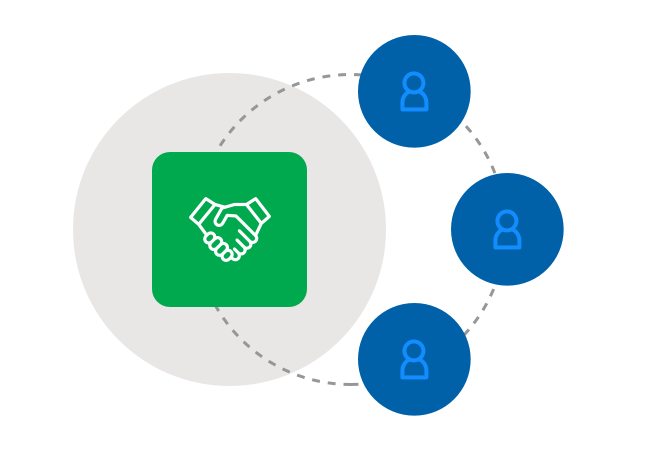Safeguarding Success: A Deep Dive into Corporate Security Methods
Wiki Article
From Cybersecurity to Physical Procedures: Enhancing Business Protection in a Changing Globe
In today's rapidly evolving electronic landscape, the value of business security can not be overstated. As cyber risks come to be progressively innovative and common, organizations have to surpass typical cybersecurity measures to guard their possessions and operations - corporate security. This is where the combination of physical security measures ends up being important. By incorporating the strengths of both cybersecurity and physical security, business can create a thorough protection method that addresses the diverse variety of risks they deal with. In this conversation, we will certainly discover the changing danger landscape, the requirement to incorporate cybersecurity and physical security, the application of multi-factor authentication procedures, the relevance of employee awareness and training, and the adjustment of safety procedures for remote labor forces. By analyzing these crucial locations, we will certainly obtain important understandings right into just how companies can enhance their corporate safety in an ever-changing globe.Recognizing the Changing Hazard Landscape
The progressing nature of the modern-day world necessitates a thorough understanding of the altering threat landscape for effective company safety and security. In today's interconnected and digital age, risks to corporate safety have become much more complex and innovative. As innovation breakthroughs and companies come to be increasingly reliant on electronic framework, the potential for cyberattacks, data breaches, and various other protection breaches has considerably boosted. It is essential for companies to stay informed and adapt their security gauges to address these advancing dangers.One key facet of recognizing the changing risk landscape is recognizing the different types of dangers that organizations deal with. In addition, physical threats such as theft, criminal damage, and corporate espionage remain prevalent concerns for services.
Surveillance and assessing the risk landscape is essential in order to identify prospective threats and vulnerabilities. This entails remaining upgraded on the most recent cybersecurity patterns, analyzing danger knowledge records, and performing normal threat assessments. By understanding the transforming hazard landscape, companies can proactively apply proper safety and security actions to mitigate dangers and secure their assets, credibility, and stakeholders.
Integrating Cybersecurity and Physical Safety
Integrating cybersecurity and physical safety and security is vital for detailed company defense in today's electronic and interconnected landscape. As companies significantly rely upon innovation and interconnected systems, the limits between physical and cyber threats are becoming obscured. To efficiently guard versus these dangers, a holistic approach that combines both cybersecurity and physical safety actions is necessary.Cybersecurity concentrates on shielding digital assets, such as systems, networks, and data, from unauthorized gain access to, interruption, and burglary. Physical protection, on the various other hand, incorporates procedures to secure physical assets, individuals, and centers from threats and susceptabilities. By integrating these two domain names, companies can resolve vulnerabilities and threats from both digital and physical angles, thereby improving their total safety and security stance.
The assimilation of these two disciplines allows for a much more extensive understanding of protection dangers and allows a unified reaction to cases. Physical gain access to controls can be boosted by incorporating them with cybersecurity protocols, such as two-factor authentication or biometric identification. Cybersecurity procedures can be matched by physical safety and security procedures, such as security video cameras, alarm systems, and safe and secure access points.

Applying Multi-Factor Verification Steps
As companies increasingly focus on comprehensive security steps, one efficient approach is the application of multi-factor verification actions. Multi-factor authentication (MFA) is a security technique that requires customers to offer several forms of identification to access a system or application. This strategy includes an extra layer of defense by incorporating something the user recognizes, such as a password, with something they have, like a safety or a fingerprint token.By applying MFA, organizations can considerably boost their security pose - corporate security. Conventional password-based authentication has its restrictions, as passwords can be easily jeopardized or failed to remember. MFA minimizes these risks by adding an extra authentication variable, making it harder for unapproved people to access to delicate details
There are several types of multi-factor authentication approaches readily available, including biometric authentication, SMS-based verification codes, and equipment symbols. Organizations need to assess their certain requirements and choose one of the most ideal MFA service for their demands.
Nonetheless, the execution of MFA need to be meticulously prepared and implemented. It is essential to strike an equilibrium in between safety and security and functionality to prevent user stress and resistance. Organizations must likewise take into consideration potential compatibility problems and supply appropriate training and assistance to ensure a smooth shift.
Enhancing Staff Member Recognition and Training
To reinforce business safety and security, companies need to focus on enhancing staff member understanding and training. In today's swiftly advancing threat landscape, employees play an essential duty in guarding a company's delicate info and assets. Sadly, numerous safety breaches take place due to human error or lack of company website awareness. Companies require to spend in detailed training programs to inform their employees regarding possible risks and the finest techniques for alleviating them.Reliable worker recognition and training programs should cover a wide variety of subjects, including data security, phishing assaults, social engineering, password health, and physical security actions. These programs need to be tailored to the particular requirements and obligations of various worker functions within the organization. Normal training simulations, workshops, and sessions can help employees establish the required abilities and expertise to identify and respond to safety risks successfully.
Furthermore, organizations ought to urge a society of security understanding and provide recurring updates and reminders to keep workers informed regarding the most up to date hazards and mitigation methods. This can be done through interior communication next page channels, such as e-newsletters, intranet sites, and e-mail projects. By promoting a security-conscious workforce, companies can considerably decrease the likelihood of protection cases and safeguard their valuable possessions from unauthorized accessibility or concession.

Adapting Safety And Security Procedures for Remote Workforce
Adapting company protection procedures to suit a remote labor force is essential in guaranteeing the security of delicate information and properties (corporate security). With the enhancing pattern of remote work, companies have to apply ideal safety procedures to minimize the threats related to this brand-new way of functioningOne crucial aspect of adapting safety actions for remote job is establishing protected communication channels. Encrypted messaging platforms and online exclusive networks (VPNs) can assist secure sensitive details and avoid unauthorized accessibility. Furthermore, organizations ought to implement using solid passwords and multi-factor authentication to boost the protection of remote gain access to.
An additional important consideration is the application of safe remote gain access to solutions. This entails giving employees with safe access to business resources and information via online desktop facilities (VDI), remote desktop computer procedures (RDP), or cloud-based services. These technologies ensure that delicate information continues to be safeguarded while making it possible for employees to execute their functions successfully.

Lastly, thorough safety recognition training is critical for remote employees. Educating sessions Recommended Site ought to cover finest methods for firmly accessing and dealing with sensitive information, determining and reporting phishing efforts, and preserving the total cybersecurity health.
Final Thought
In verdict, as the hazard landscape proceeds to advance, it is crucial for companies to enhance their protection measures both in the cyber and physical domain names. Integrating cybersecurity and physical safety and security, carrying out multi-factor authentication actions, and improving employee recognition and training are necessary steps in the direction of achieving durable corporate protection.In this discussion, we will certainly check out the transforming risk landscape, the demand to integrate cybersecurity and physical protection, the application of multi-factor verification steps, the relevance of worker recognition and training, and the adaptation of safety measures for remote labor forces. Cybersecurity actions can be matched by physical protection measures, such as monitoring electronic cameras, alarms, and safe access points.
As companies significantly prioritize extensive protection measures, one efficient technique is the execution of multi-factor verification actions.In conclusion, as the risk landscape proceeds to advance, it is essential for organizations to reinforce their protection measures both in the cyber and physical domains. Integrating cybersecurity and physical safety and security, carrying out multi-factor verification actions, and enhancing employee awareness and training are vital actions in the direction of accomplishing durable company protection.
Report this wiki page